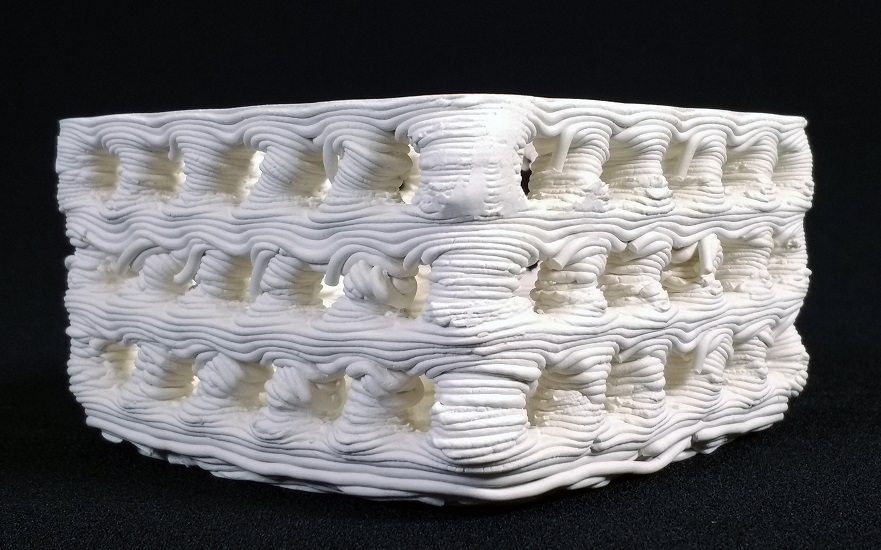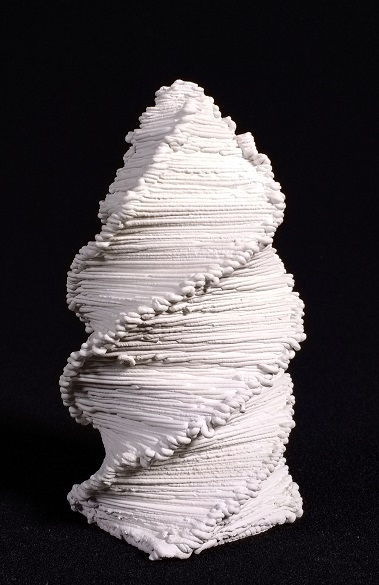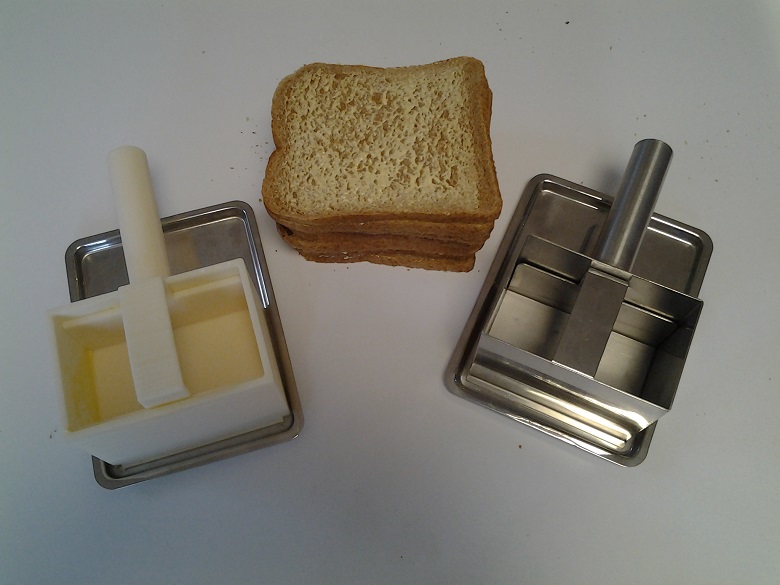3D Design Technology offers Innovative support for local businesses
Innovation Advisor Dana Church explores innovative design solutions for local businesses
By Andrew Fowler | Published on 18 January 2018
Categories: Business; School of Architecture, Design and the Built Environment;

The Design Innovation hub at Nottingham Trent University offer support to local, small and medium businesses through the Enabling Innovation programme. One area of support provided to businesses is access to design technologies such as 3D visualisation and prototyping facilities. 3D printing, 3D modelling, laser cutting and packaging design are just some of the many areas of expertise the hub can help businesses innovate.

Developments with clay, wax, and paste 3D Printing
Dana Church, Innovation Advisor for the hub, has been assisting businesses since 2016 through the funded programme. Dana’s work with 3D printing has opened up opportunities for designer/makers to innovate in a range of materials. Recently, Dana has begun to explore how 3D clay printing can benefit local designer/makers produce their work.
“We have recently purchased a large format machine for clay and paste materials. We offer professional designers and artists the opportunity to explore their product ideas using digital techniques for design and production – with the option to integrate these into their existing work flows and traditional processes.
Keen to avoid the sterility of many 3D printed pieces, we are keen to explore opportunities for generating 3D textures via computational design or simply exploiting the vagaries of 3D printing with a paste material.”

How our Product Design work is helping businesses to innovate
The University's Product Design Innovation support has proved to be very popular with local ceramicists, glass artists, and sculptors. We are able to 3D scan existing maquettes or prototypes to generate a 3D CAD model. Or we might work with drawings to reproduce a design using various 3D software. Each approach results in a STL file suitable for 3D printing. However, 3D Printing can also benefit more traditional businesses.
Enabling Innovation's work with SMEs has greatly helped local business OFFUNDO Limited. They approached NTU looking for help to develop their innovative butter spreading product for the commercial market. Dana Church, from the Enabling Innovation programme, helped the company transform their product from stainless steel to plastic.
Having remodelled the 2-part geometries to suit plastic production, a 3D printed prototype was made from plastic. The plastic parts are lighter in weight, dishwasher-proof, food-safe, and look great, whilst retaining the strength seen in the metal unit. With these functional and aesthetic criteria satisfied, the company realised that their product could be commercially produced directly by 3D printing, rather than by injection moulding. The product became viable by dispensing with prohibitive tooling costs which reduced the production unit cost by 88% when compared to its metal predecessor.
Attending the popular ‘Web Development for SME Workshops’ that continue to run through 2018, OFFUNDO gained the know-how to strengthen their presence online when marketing their products, allowing them to explore e-commerce and international market opportunities. The company is also developing a new enhanced website with guidance from Enabling Innovation’s Computer Science Programmer.
“The Enabling Innovation programme has provided us with a vast talent pool, access to specialist facilities and technologies that would have been beyond our reach as a small entrepreneurial business. The experience and knowledge that we have been able to tap into across the programme is enabling us to move the business forward with more confidence in our abilities.”
Julie Whitehead - OFFUNDO Limited
Enabling Innovation at NTU
Enabling Innovation is a three-year collaboration between Nottingham Trent University, the University of Nottingham, and the University of Derby to support SMEs in Derbyshire and Nottinghamshire to innovate. It is part-funded by the European Regional Development Fund (ERDF).
Enabling Innovation runs a wider programme of one-off events, workshops and masterclasses, as well as provides local SMEs and start-ups with access to University specialists and expert facilities free of charge.
You can find out more about Enabling Innovation and the support it offers businesses on our Services for Business website.
Twitter: @NTU_EI
LinkedIn: Enabling Innovation at NTU
Phone: +44 (0)115 848 8899
Notes for Editors
Enabling Innovation will enable us to support businesses to invest in research and innovation; to make them more competitive, and help them to grow and create high-skill jobs with a range of schemes. We will achieve this in a number of ways, including:
- dedicated technical hubs in food and drink, materials engineering, computing and data, and design innovation
- innovation management workshops delivered by Nottingham Business School
- a contribution of 20% towards 60 graduate salaries for up to a year, to support businesses to introduce innovative products, services or processes
- academic and student-led projects and consultancy
- intensive specialist support for innovative businesses
- networking and business development workshops and events.
Design Innovation
The College of Art, Design and Built Environment.
This expert hub has already delivered the successful ERDF Future Factory project (2009-2015). This project has led to the development of a dedicated industrial design facility which, through this new Enabling Innovation programme, will provide SMEs with access to disruptive technologies, including 3D visualisation and rapid prototyping, virtual reality technologies, eco-design expertise, and innovative design practices.